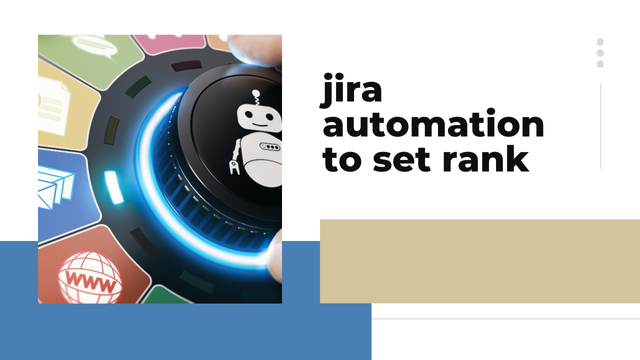Jira automation for rank setting: streamlining task prioritization
Task management and focusing on top priorities are important features in project management. Jira is the widely used software for task and project management and it offers automation through which team can simplify workflows and reduce manual work. This use case would automate task rank setting using Jira and ensure that the work these items are assigned gets the highest priority always possible.
What Is Rank in Jira?
In fact, rank represents the relative importance of an issue in Jira backlog. Rank has a direct impact on the queue of issues which a team will be tackling. Keeping rank correctly maintained and updated is needed because:
The team will work mostly on the important tasks first. The tasks will be ordered priorities by which the planning for the sprint can continue. The activities will be related to the business targets and deadlines. Why automate rank-setting? Manually ranking tasks becomes so tiring and error-prone with large projects involved. Automate the following:
Reduces repetitive actions saves time.
Pre-establish consistent prioritization rules. Adapts dynamically to the constantly changing conditions, like the creation of new tasks or changes made to existing tasks. Setting Up Jira Automation for Rank
1. Define the Automation Goals Before setting up the rule for automating an action, identify rank adjustment scenarios. These include:
Automatically rank an issue
when created based on priority level. Re-rank an issue when fields such as due date or story points changes. Push the urgent issues to be at the top of the backlog.
2. Create A Jira Automation Rule Follow these simple steps to setup automation in Jira:
Step 1: Access Automation Settings Navigate to your project.
Under Project Settings > Automation
Step 2: Choose Trigger Select a trigger:
Choose a trigger to start off your automation. Trigger is the item to be used here: Issue Created To rank a newly created tasks. Field Value Changed To resync the task when some values for fields changed in the table
Step 3: Define conditions
Specify any conditions in this step by restricting when a particular rule has to be triggered.
For example; If Priority= “High then rank top If Date within the next week Rank accordingly.
Step 4: Set the Action
Select Edit Issue as the action and rank set the field. Rank of a Jira issue can also be changed through keywords such as Rank before [issue key] or Rank after [issue key].
Step 5: Testing and Publishing Rule
Test in staging environment with sample data in case it actually works. Upon confirmation, then publish it and make it available for usage.
6. Example Use Cases Use Case
1: Rank New Issues Based on Priority Trigger: Issue Created Condition: Priority = High Action: Rank before the top-ranked issue Use Case
2: Re-Rank Based on Due Date Trigger: Field Value Changed (Due Date) Condition: Due date is within 3 days. Action: Rank before tasks with later due dates.
3: Promote Blocked Issues Trigger: Issue Transitioned to Blocked Condition: Status = Blocked Action: Rank before the current highest-ranked issue in the same project. Best Practices
Keep Rules Simple: Overly complex automation rules can become difficult to manage and debug.
Test Regularly: Ensure automation behaves as expected with various edge cases. Communicate with the Team: Inform your team about the automation to align expectations and encourage feedback.
Monitor Performance: Regularly review the automation logs to identify any failures or inefficiencies.
Conclusion
Automating rank in Jira can greatly improve workflow efficiency and task prioritization. This is possible when teams utilize the full capabilities of Jira’s automation features to make sure that their backlogs are all organized, that focus remains on high-impact tasks, and most importantly, less time is spent updating the status by hand. Whether you manage a single project or oversee multiple initiatives, rank automation in Jira can be a complete game-changer for productivity and collaboration.
ALSO READ THIS:jira automation contains any of

